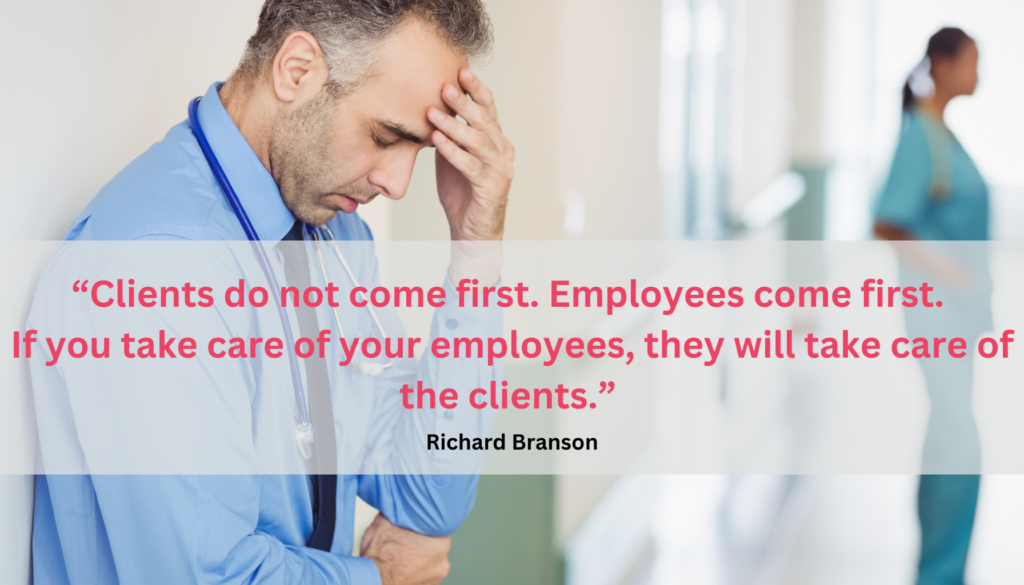The health care industry faces a perfect storm of challenges. High turnover, burnout, and low employee engagement are testing the resilience of teams, while frequent mergers introduce complex cultural and operational dynamics. Health care leaders must navigate these pressures by breaking down silos, fostering collaboration, and integrating new staff—all while maintaining high-quality patient care in the face of understaffing and widespread burnout.
According to a fact sheet published by The American Association of Colleges of Nursing, federal authorities project a shortage of 78,610 full-time RNs in 2025 and a shortage of 63,720 full-time RNs in 2030. South Carolina is among the top ten states with the largest projected nursing shortage.
Drawing on my experiences and supported by Gallup’s CliftonStrengths and Q12 Engagement tools, this article explores how health care organizations can build cohesive, high-performing teams in the face of these hurdles.
The Challenges I See in Health Care Today
- High Turnover Among Nurses and Providers: Health care is grappling with a retention crisis, particularly among nursing staff. Constant turnover disrupts team dynamics, increases costs, and negatively affects patient care. Established organizations fail to meet the needs of different generations in the workforce, especially Millennials and Gen Z.
- Siloed Behaviors: In many organizations, silos create barriers to collaboration, especially after mergers. Protectionism between departments or roles fosters inefficiency and undermines trust.
- Burnout: Providers and nursing staff face relentless demands. Emotional and physical exhaustion not only erodes well-being but also diminishes the quality of care.
- Lack of Leadership Support: Too often, doctors and clinicians promoted into leadership positions are given little to no training or guidance. The health care system is set up to provide patient care, not to develop health care leaders. Without support, they struggle to lead effectively, contributing to dissatisfaction among their teams. Leaders are stretched thin between patient care and caring for their employees.
- Matrix-Like Challenges: Health care often mirrors the dynamics of matrix organizations, where staff work with people they don’t directly report to. Misaligned expectations and fragmented feedback loops create friction, especially when resolving disputes requires escalating to higher levels.
- Poor Manager Relationships (Similar to #4 but important to point out separately): According to a LinkedIn workforce survey, nearly 70% of U.S. employees would quit over a bad manager. A lack of investment in leadership development, especially of first-time leaders, is a lot more costly in the long run. Millennials and Gen Z employees, who prioritize good leadership and personal growth, are especially likely to leave under poor management.
These challenges aren’t just internal. Patients sense the culture of a practice as soon as they walk through the doors. A cohesive team radiates positivity and confidence, while a fractured culture breeds inefficiency and stress.
A Path Forward: CliftonStrengths and Q12 Employee Engagement
CliftonStrengths, a tool designed to identify and develop individuals’ unique talents, offers health care organizations a way to address these issues head-on. When combined with the Q12 employee engagement survey, which pinpoints actionable factors that influence workplace satisfaction, health care leaders can create a strengths-based culture that transforms teams.
Why CliftonStrengths Works for Health Care
- Cultural Integration:Frequent mergers bring together diverse teams and operating styles. CliftonStrengths helps new and existing staff understand one another’s strengths, fostering collaboration and breaking down silos. It is basically a quick start guide for managers and (new) employees.
- Leadership Development: By identifying and nurturing the inherent talents of new leaders, CliftonStrengths empowers them to lead with clarity and confidence. This directly addresses the lack of support for doctors and others transitioning into managerial roles.
- Improved Engagement: Engaged employees are more collaborative, productive, and less likely to experience burnout. They know what is expected of them, how they can best contribute to the companies’ success and that managers care about them. Q12 provides health care organizations with the data needed to take targeted action and boost engagement.
Real-World Success: Infirmary Health in Alabama
Infirmary Health, Alabama’s largest non-governmental health system, faced challenges that resonate across the industry: high turnover, disengaged teams, and burnout. By implementing CliftonStrengths and the Q12 survey, they achieved remarkable results:
- Turnover Reduced by 22%: Retaining experienced staff saved significant costs and preserved team dynamics.
- Engagement Scores in the 77th Percentile: Moving from the bottom quartile to the top quarter of Gallup’s database signaled a dramatic cultural shift.
- Better Patient Outcomes: Improved teamwork and communication enhanced the patient experience, demonstrating that engaged teams deliver better care.
Health care organizations operate on the front lines of human well-being, where every employee interaction has the potential to impact patient outcomes. CliftonStrengths provides a roadmap for building stronger teams by focusing on strengths rather than weaknesses, enabling health care workers to thrive even in high-pressure environments.
The results from Infirmary Health demonstrate that prioritizing employee engagement isn’t just a “nice to have” – it’s a strategic imperative. With the right tools, health care leaders can create a workplace culture where employees feel valued, empowered, and equipped to succeed.
For more insights, watch the video, ‘How Engaging Employees Benefits Patients at Infirmary Health System,’ on Gallup’s Called to Coach platform.
Creating a Culture Patients Can Feel
Health care teams that thrive are those where appreciation and communication are embedded into the culture. When employees feel valued for their unique contributions and supported by their managers, it creates a ripple effect that patients notice.
CliftonStrengths and Q12 provide the foundation for addressing these challenges. By shifting the focus to what people do best and fostering open communication, health care leaders can turn their organizations into places where employees want to work and patients want to be treated.

